#18th century british art
Text
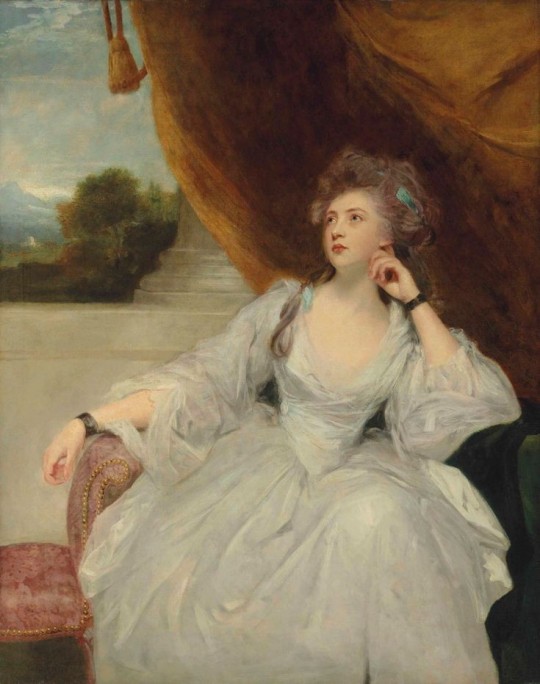
Joshua Reynolds (British, 1793-1792) • Portrait of Elizabeth Falconer as Contemplation • c. 1780
#art#painting#fine art#art history#18th century#joshua reynolds#18th century british art#rococo#“grand style”#portrait#female portrait#portrait painter#british portrait painter#oil painting#women in paintings#women in white#la robe blanche art blog#the white dress
122 notes
·
View notes
Text
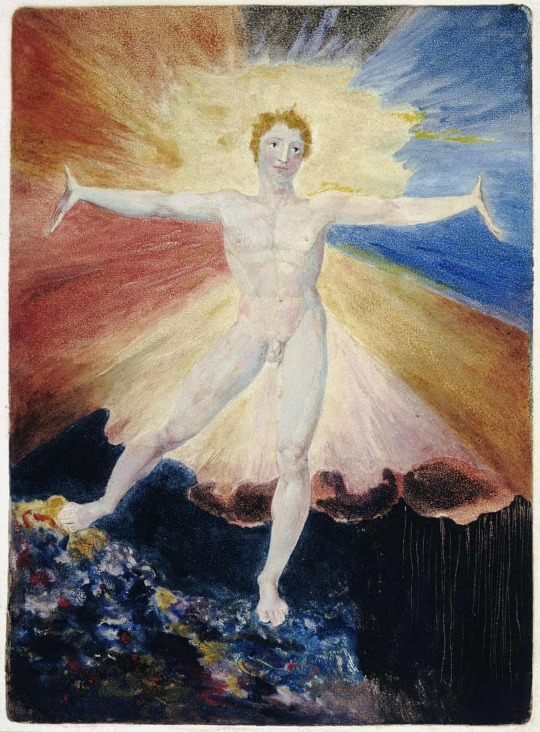
William Blake (British/English, 1757-1827) • Albion • 1793 • British Museum
In Blake's mythology, Albion was the primeval man whose fall and division results in the FourZoas: Urizen, Tharmas, Luvah/Orc and Urthona/Los. The name derives from the ancient and mythological name of Britain, Albion. – Wikipedia
This image exists as drawing, engraving, colour printed etching and watercolour.
#art#painting#fine art#art history#william blake#british artist#british poet#watercolour#etching#drawing#18th century british art#british museum#mythology#ancient britain#pagan sphinx art blog#art blogs on tumblr
18 notes
·
View notes
Text
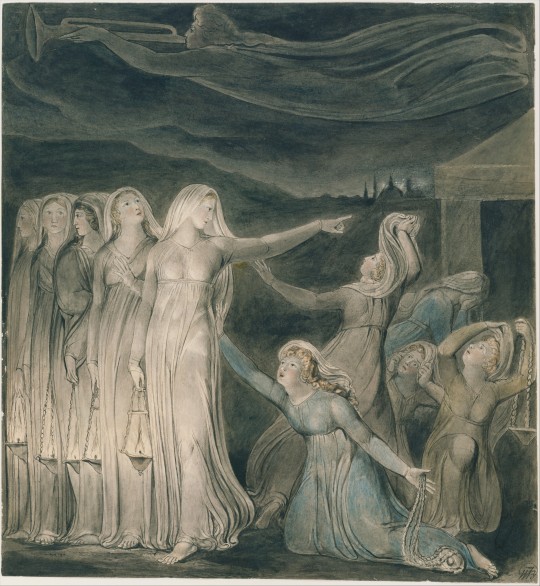
The Parable of the Wise and Foolish Virgins, William Blake, ca. 1799-1800
#art#art history#William Blake#religious art#Biblical art#Christian art#Christianity#parables#parables of jesus#Romanticism#Romantic art#English Romanticism#British art#English art#18th century art#drawing#watercolor#pen and ink#Metropolitan Museum of Art
851 notes
·
View notes
Text

The future King George III, age 9, reading in a blanket fort in 1747
507 notes
·
View notes
Text

Thomas Gainsborough (1727-1788)
"Frances Browne, Mrs John Douglas" (1783)
Oil on canvas
#paintings#art#artwork#genre painting#female portrait#thomas gainsborough#oil on canvas#fine art#english artist#british artist#portrait of a woman#white dress#dresses#clothing#clothes#jewelry#jewellery#1780s#late 1700s#late 18th century#a queue work of art
218 notes
·
View notes
Text

"Beat to quarters" by John R Christian (1954-)
186 notes
·
View notes
Text

Joanna de Silva (1792). William Wood.
304 notes
·
View notes
Text
#TextileTuesday: look closely, it’s a “needlepainting!” A favorite piece from the “Making Her Mark: A History of #WomenArtists in Europe, 1400-1800” exhibition at Baltimore Museum of Art:
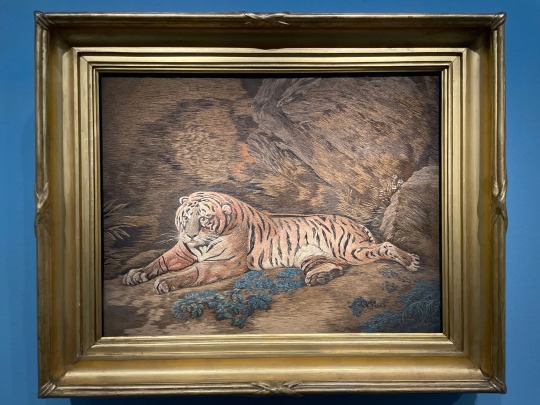
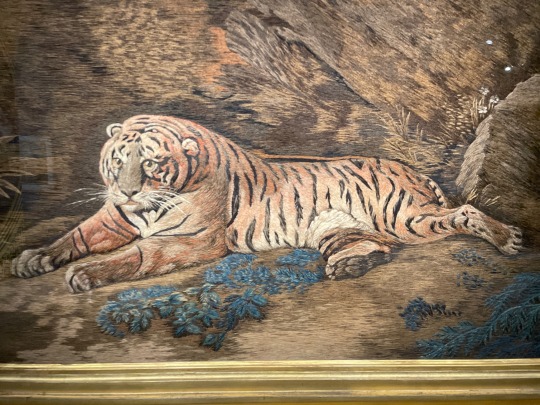

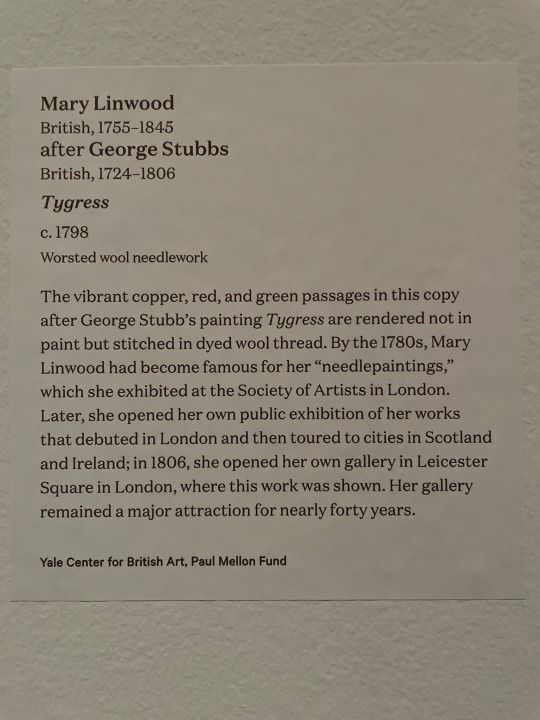
Mary Linwood (British, 1755-1845)
after George Stubbs (British, 1724-1806)
Tygress, c. 1798
Worsted wool needlework
“The vibrant copper, red, and green passages in this copy after George Stubb's painting Tygress are rendered not in paint but stitched in dyed wool thread. By the 1780s, Mary Linwood had become famous for her ‘needlepaintings,’ which she exhibited at the Society of Artists in London.
Later, she opened her own public exhibition of her works that debuted in London and then toured to cities in Scotland and Ireland; in 1806, she opened her own gallery in Leicester Square in London, where this work was shown. Her gallery remained a major attraction for nearly forty years.”
#animals in art#european art#18th century art#needlework#needlepainting#textiles#Mary Linwood#museum visit#exhibition#British art#George Stubbs#tiger#feline#wild cat#Baltimore Museum of Art#women artists
236 notes
·
View notes
Text

Penelope Unraveling Her Web, 1783–1784
Joseph Wright of Derby
#Joseph Wright of Derby#english art#british art#1700s#18th century#art#painting#art history#fashion#portrait#fashion history#1780s#Penelope#the odyssey#mythology#greek mythology#light play
143 notes
·
View notes
Text

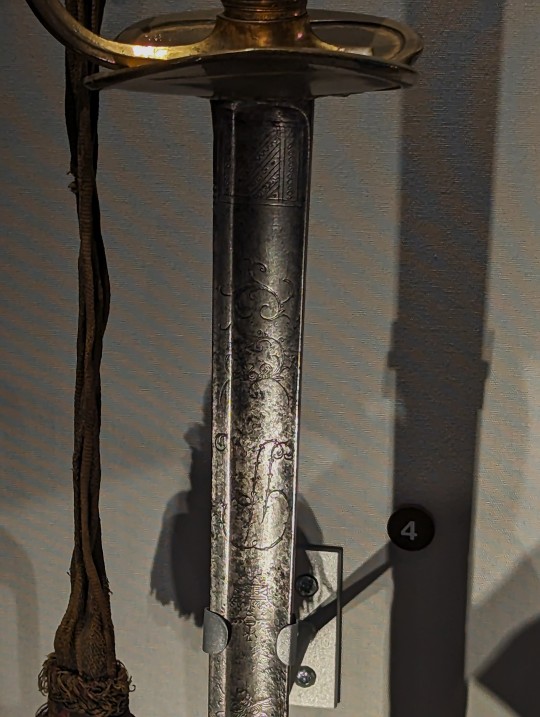

Infantry Officer's Small Sword from Germany dated to 1796 on display at the Cumbria Museum of Military Life in Carlise, England
Until 1786 there was little regulation on what swords officers in the British army carried. After that they introduced regular patterns for regiments and officers to use. Small swords like this were more a symbol of authority and rank on the battlefield and on parade unlike cavalry swords which were more in use in combat.
Photographs taken by myself 2023
#sword#art#british empire#england#english#military history#georgian#hanoverian#18th century#cumbria museum of military life#carlisle#barbucomedie
135 notes
·
View notes
Text
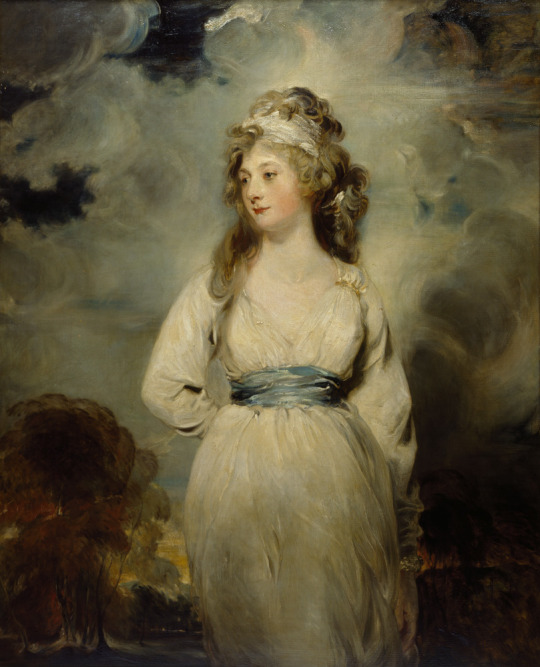
Thomas Lawrence (British, English – 1769-1830) • Lady Amelia (Emily) Anne Hobart, Vicountess Castlereagh, Marchioness of Londonderry (1772-1829) • After 1794
#art#painting#fine art#art history#thomas lawrence#romanticism#english artist#portraitist#portrait#female portrait#18th century british art#portrait of a noble woman#la robe blanche art blog#women in white#white dress
85 notes
·
View notes
Text
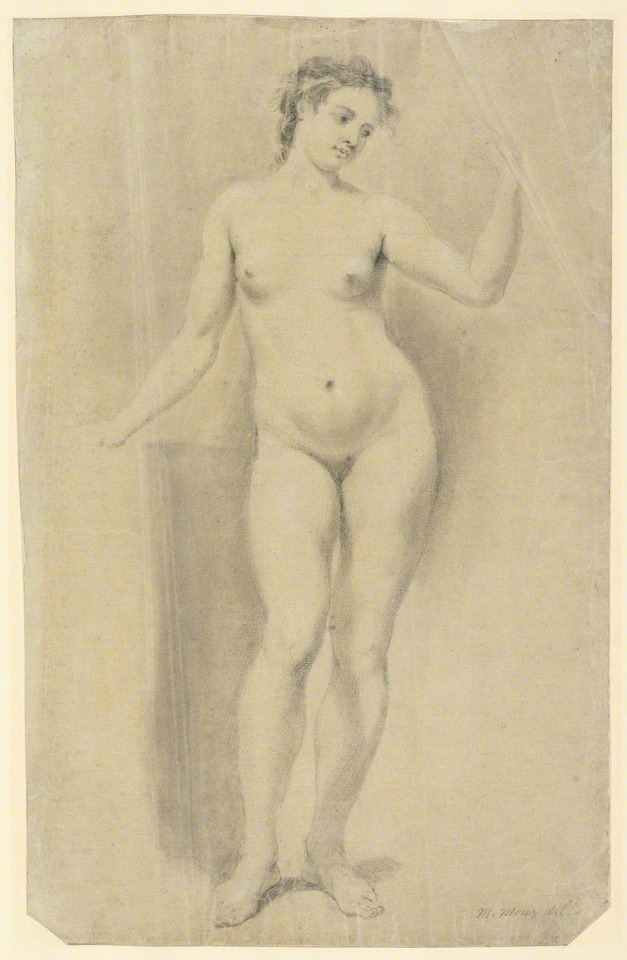
Mary Moser (British, 1744–1819) Standing Female Nude • Unknown date • Black & white chalk on grey-green paper • Fitzwilliam Museum, Cambridge, UK
#art#drawing#fine art#art history#mary moser#18th century british art#art appreciation#art nude#woman artist#british artist#art lover#art blog#pagan sphinx art blog#women in art
12 notes
·
View notes
Text
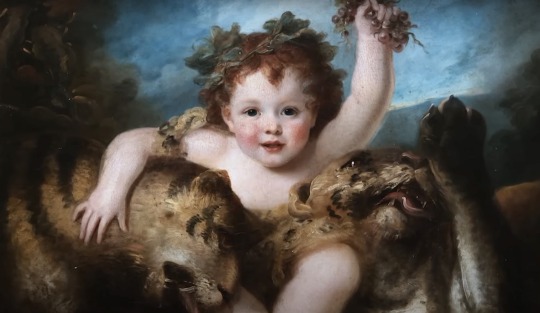
Maria Cosway, Portrait of the Hon. George Lamb, as The Infant Bacchus (detail), 18th century. 70.5 x 90.7cm. Private Collection.
62 notes
·
View notes
Text

The Blue Heron (Ardea coerulea), hand-colored etching from The Natural History of Carolina, Florida and the Bahama Islands, Mark Catesby, between 1731 and 1743
#art#art history#Mark Catesby#illustration#animals in art#bird#birds#heron#blue heron#waterfowl#etching#British art#English art#18th century art#National Gallery of Art
410 notes
·
View notes
Text
The Painted Hall, Greenwich

During the king’s coronation I visited Greenwich's "Painted Hall." This series of rooms depict scenes relating to the success of British Protestantism and the beginning of burgeoning imperial expansion. Following the vital English naval victory over France at La Hougue in 1692, Queen Mary ordered that a hospital be built for retired seamen, in keeping with the existing hospital for former soldiers at Chelsea.
While Mary died before its completion her husband, William III, saw the projected through. Sir Christopher Wren (of St Paul’s fame) and his assistant, Nicholas Hawksmoor, designed a grand series of buildings at Greenwich, in London.
The Royal Hospital at Greenwich acted as a retirement home for sailors between the 1700s and late 1900s. And at its heart is the Painted Hall, a series of rooms where a relatively unknown artist, James Thornhill, was commissioned to paint scenes of British-Protestant triumph.
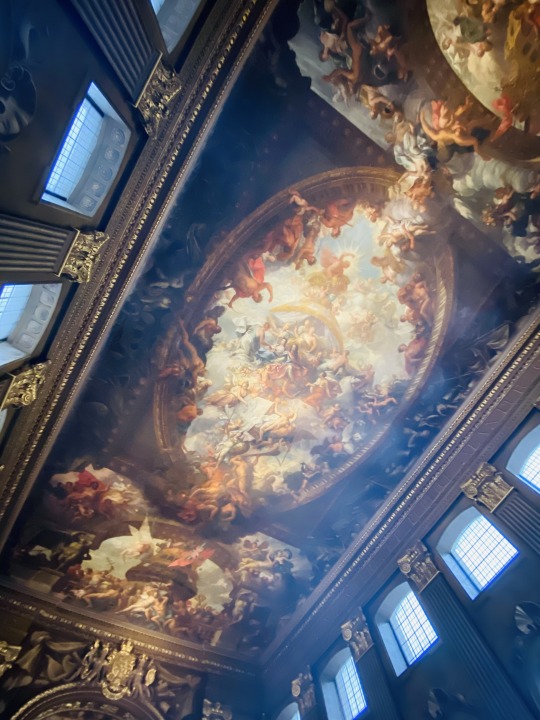
At the centre is King William III and Queen Mary shown overseeing ‘The Triumph of Peace and Liberty over Tyranny.’ Immediately above the couple and to their left is the allegorical figure of Prudence holding a mirror, one of the four Cardinal Virtues.

To her right are Providence and Concord, while to her left is Justice. Beneath Justice is a woman representing Europe, who is accepting the ‘cap of liberty,’ the ancient red Phrygian cap, from William, who in turn is accepting an olive branch from ‘Peace.’

Beneath William’s foot is the defeated Louis XIV of France with a broken sword, and a tumbling, discarded papal crown. Beneath them the ‘Spirit of Architecture’ along with Truth and Time are overseeing plans showing the actual construction of the hospital.
Above it all, Apollo rides his chariot, while the signs of the zodiac are arrayed around the edges. At the bottom, Pallas Athena and Hercules crush the Hydra and the Gorgon, ‘expelling the Vices from the Kingdom of William and Mary.’

Another section of the ceiling shows a captured Spanish galley laden with the spoils of war, a reference to the British capture of Gibraltar in 1704. Diana, Goddess of the moon, passes mastery of the tides over to British sailors. Beneath them are representations of the English rivers Avon, Severn and Humber.
To the left and the right, scientific advancement is celebrated by the presence of astronomers Tycho Brahe, John Flamsteed, Copernicus and Newton’s ‘Principia.’ The gods Neptune and Cybele oversee it all.
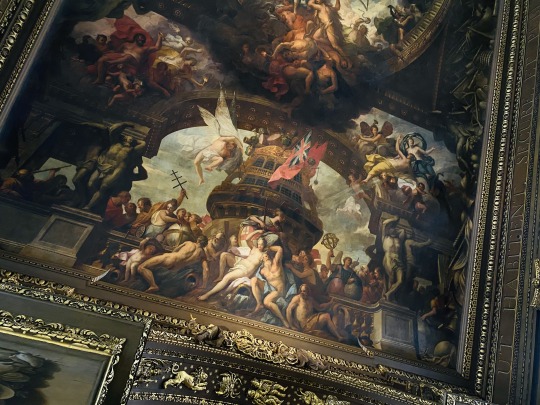
The next section of the ceiling shows HMS Blenheim being filled with the spoils of war by the winged figure of Victory. Beneath are more river representations along with the City of London and figures representing navigation and astronomy. On the left is Galileo, while Zeus and Juno watch from above.

The painted hall took decades to complete, and saw further dynastic change, as George I, originally of Hanover, became king after William III’s successor, Queen Anne, died. George maintained the Protestant ascendancy, as portrayed in the upper hall chamber adjoining the main hall.
Here we see George I, his wife Sophia of Hanover and their children and grandchildren beneath St Paul’s, overseen the a figure representing “the Golden Age” with overflowing cornucopia. The artist, James Thornhill, added himself on the right.
Over them is an inscription quoting Virgil's Eclogues, which translates as ‘a new generation has descended from the heavens.’
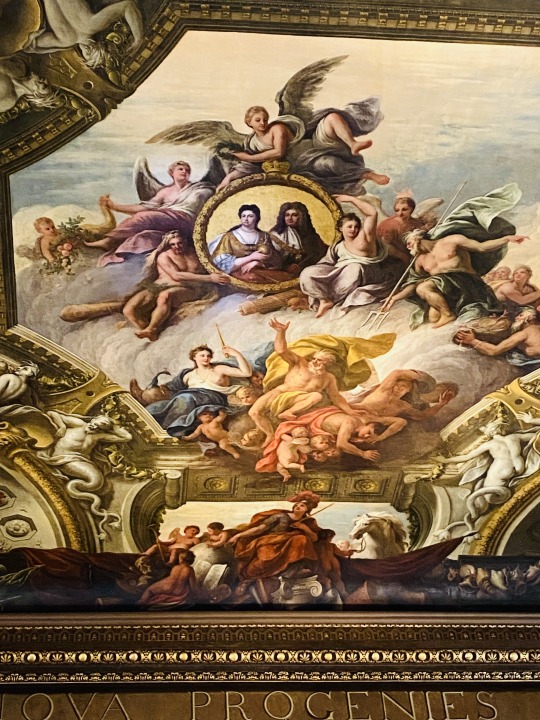
On the left of the upper hall is a depiction of William III’s arrival in England at the start of the Glorious Revolution in 1688, while George I is shown arriving on the opposite side of the hall (rather unrealistically in a chariot) in 1714.
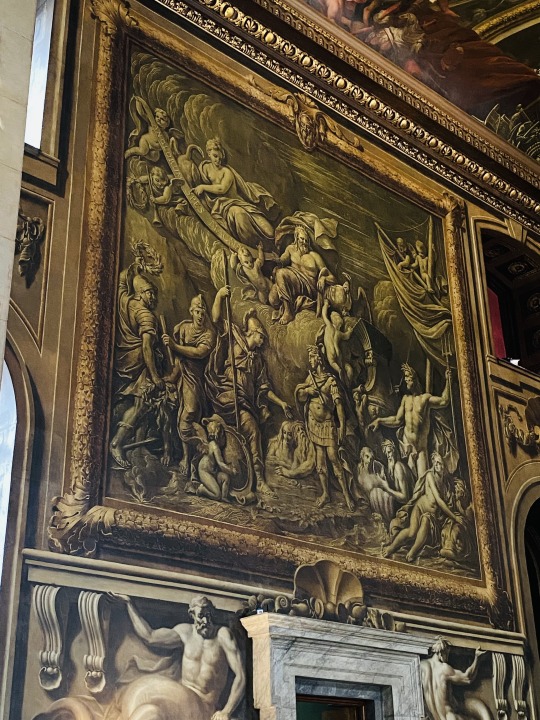
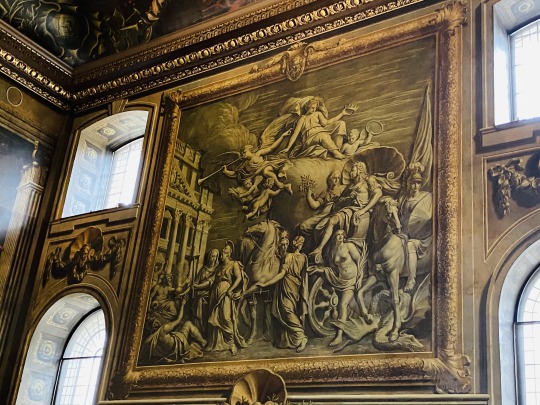
#painted hall#the painted hall#greenwich#history#british history#art#art history#william iii#william of orange#william and mary#george i#queen anne#17th century#18th century
132 notes
·
View notes
Text

Joshua Reynolds (1723-1792)
"Portrait of Omai" (1776)
Oil on canvas
#paintings#art#artwork#genre painting#male portrait#joshua reynolds#oil on canvas#fine art#english artist#british artist#portrait of a man#asian man#clothing#clothes#white clothing#1770s#late 1700s#late 18th century#a queue work of art
171 notes
·
View notes